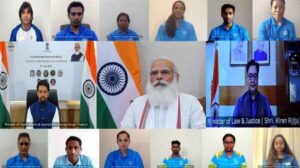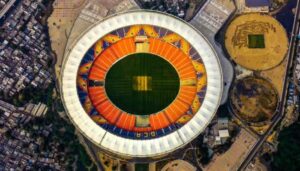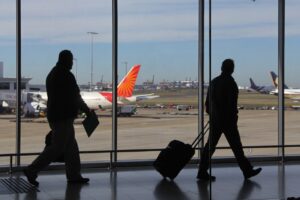India’s first driverless train today rolled out on the 37-km Magenta Line of the Delhi Metro. PM Narendra Modi inaugurated the fully automated driverless train service by flagging off the train stationed at Jasola Vihar-Shaheen Bagh Metro station. The Magenta Line of the Delhi Metro connects Janakpuri West to Botanical Garden. With the launch of these fully automated Driverless Train operations (DTO), India enters into the elite league of few countries having this facility in their Metro system.
10 things to know about driverless metro train
1) The fully automated trains will reduce human intervention in operations and offer more reliability and safety for the commuters.
2) The driverless train technology (DTO) was inaugurated on the Magenta Line, connecting Janakpuri West and Botanical Garden, but will be extended to the Pink Line (Majlis Park-Shiv Vihar) by mid-2021.
3) The extension of this technology to the Pink Line will increase the driverless network on the Delhi Metro to around 94 km.
4) This system also brings more flexibility in trains in operation. As a result, the number of trains in service can be regulated based on demand dynamically without any dependence on availability of crew.
Also Read: ‘First driverless metro train shows India moving fast’: PM Modi
5) The fully automated trains operate on communication based train control (signalling) system, they can be run with a headway as high as 90 seconds.
6) Initially, the train operator will be present in the automated trains to instil a sense of confidence and assistance.
7) DTO’s higher level of diagnostic features will also reduce maintenance down time of trains.
8) The driverless trains will have six coaches. Each coach can accommodate a maximum of 380 passengers.
9) With the launch of driverless metro train, India has now joined a select group of countries of the world where the facility is available.
10) The driverless train operation technology can be implemented only on Line 7 and Line 8 of the DMRC network which came up under the Phase III expansion. These corridors are equipped with an advanced signalling technology.
Delhi Metro began its commercial operation on 25 December 2002, a day after the then prime minister Atal Bihari Vajpayee had inaugurated DMRC’s first stretch from Shahdara to Tis Hazari.









India braces for heatwave: Top tips to stay safe in sweltering conditions
Stress managemnt: 10 tips to manage anxiety issues
Flight cancelled or delayed? Guidelines you must know